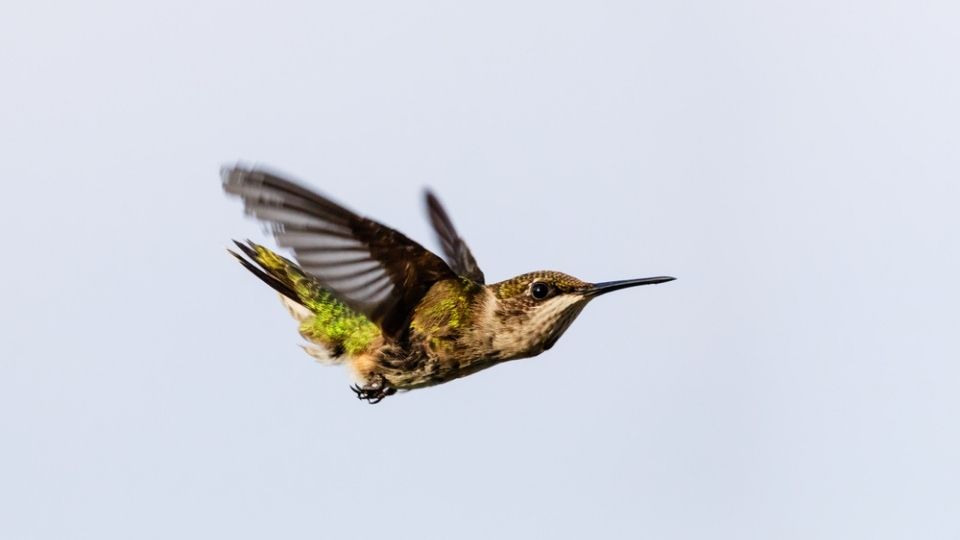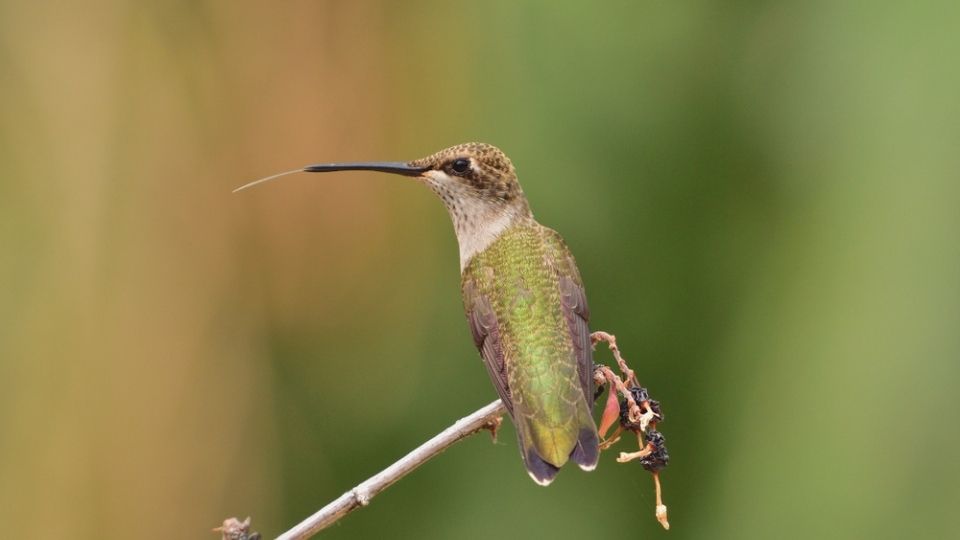When breeding season is in bloom, male hummingbirds are the first to arrive, with females close behind. They're immediately prepared to impress their female counterparts by doing all kinds of gestures: serenading, making obnoxious chirps, and popping sounds with their tail feathers.
But the hummingbird courtship dives are the most impressive of them all. Males can easily impress female hummingbirds by flaunting their colorful gorget. They usually have necks or crowns covered in impressive iridescent feathers. We believe hummingbird courtship dives deserve all the hype, so let’s get into the details!
Table of Contents
How do Hummingbirds Do Courtship Dives?
Hummingbirds are excellent fliers and perform highly-skilled acrobatics in the sky, so it only makes sense that their aerial courtship dives be equally impressive.
You’re probably curious as to what their techniques are. The best way to describe their dive is: precise and calculated.
Hummingbird Courtship Dives FAQ
- What is a courtship dive exactly?
- How does it look?
- Why is it so spectacular?
The male hummingbirds start the display by going up for about 30 meters. But what happens afterward matters the most. After reaching the desired height, he suddenly plummets and swoops right in front of the female hummingbird.
What’s impressive is that the male usually waits until he gets dangerously close to the ground so that he can stop at the last moment. Not to mention that the male dives at an incredibly high-speed—even more than their usual fast pace.
When doing this, they also make a dive sound. Their tail feathers vibrate so strongly that they make a loud popping sound. Sometimes, this spectacular display is accompanied by singing. If you combine these perfectly synchronized elements with their iridescent appearance, you can say they’re real performers!
After almost reaching and crashing into the ground, male hummingbirds fly back up and prepare for another dive. And they do that as many times as needed. This whole aerial performance is also called a dive bomb. The behavior of is dive bombing is the perfect name for such a grandiose behavior.

Are there differences in courtship dives according to species?
This diving display is called a “J” dive for male Anna’s hummingbirds (Calypte Anna). The Ruby-throated hummingbird and broad-billed hummingbird both do a “U” shaped dive. Allen’s hummingbird has two tail feathers that make different sounds when diving.
Some species of hummingbirds, like the Broad-tailed hummingbird (Selasphorus platycercus) and the Rufous hummingbird (Selasphorus rufus), have special tail feathers made for these dives. Male Costa’s hummingbirds (Calypte costae) will typically dive to the side of the female, minimizing the Doppler effect.
This is in contrast to other hummingbirds that descend directly towards their love interest. That way, they can better aim the sound they make with their tail feathers. This behavior is the perfect case of sexual selection.
To be more specific, wind tunnel experiments and fast camera recordings have been made by ornithologists and biologists. They reveal how Costa’s hummingbirds boost their dive sounds by as much as 11 decibels. They do this by twisting half of their feathers towards the female.
When do male hummingbirds do their dive display?
As soon as mating season is in sight, the males arrive and start their mating ritual. The time they arrive usually depends on the hummingbird species. In a broad sense, the mating season in hummingbirds usually begins in spring.
It seems that hummingbirds are not monogamous animals—males mate with multiple potential mates during this season. Over their lifetime, this means they do a lot of dive displays.
Hummingbirds are swift and long-distance migratory birds, so we can only imagine how fast they perform their dives. Typically, a male would perform a dive for a duration of about 12 seconds—but this can vary by species.
How to bring hummingbirds to your garden and watch their courtship dives?
Female and male hummingbirds are attracted to the same thing: sweet nectar! So they typically hang around red tubular flowers, where they can reach for their nectar using their long bill. If you want them to be a regular visitor to your yard, you might want to plant native plants or put out hummingbird feeders with sugar water.

Hummingbird Courtship Dives Summary
When male hummingbirds want to show off for the ladies, they know how to bring on the entertainment. They don’t just sing—they serenade! And they don’t just flutter with their tail feathers—they pop their tail feathers!
The hummingbird courtship dives are the most impressive display of courtship behavior in the bird world —every birder would attest to that. If you film a male hummingbird dive, you’d have to slow down the recording afterward even to be able to notice any detail. They’re that fast!
But other than speed and technique, male birds’ dives are beautiful. Imagine an iridescent jewel doing a calculated, meticulous, fast dive to impress a female. Maybe hummingbird courtship dives are so impressive, because they’re also dangerous. Hummingbirds are true daredevils. Either way, we sure do enjoy the show they put on.

